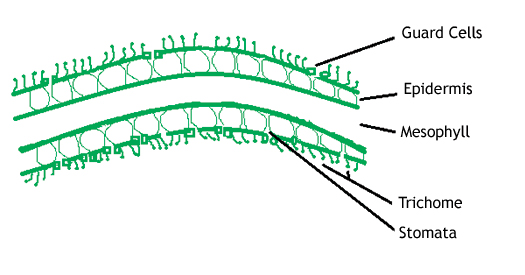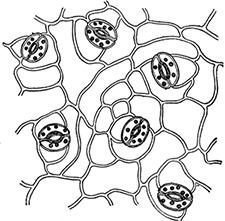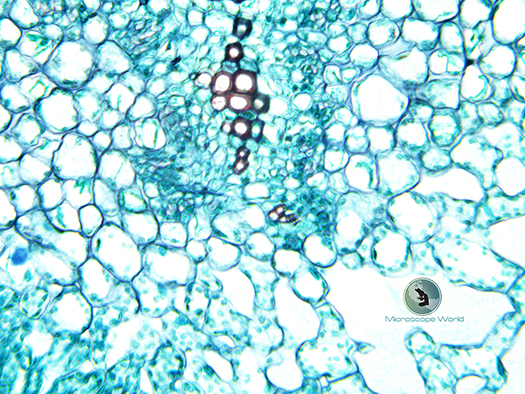
On the outer layer of the leaf of a plant are microscopic holes called stomata. Stomata control gas exchange and water loss by opening and closing. Stomata are of particular interest to plant breeders because plants with smaller or fewer stomata tend to have lower levels of evaporation and can survive drought better than those plants with more stomata. Additionally, researchers often study stomata for the effects of carbon dioxide and changes in atmospheric composition. In short, stomata are studied to measure any type of plant response to stress.

Image courtesy: The Science of Stems, Stomata and Sustainability
Typically stomata open during the day to allow for the movement of gases in and out of the leaf. At night, when photosynthesis does not take place, the guard cells close the stomata to minimize water loss. Guard cells also close when a plant it dehydrated to reduce water loss.
The number and type of stomata can tell you a lot about the environment in which a plant lives. A high number of stomata indicate fast growth and wet climates while lower numbers can indicate lower rates of photosynthesis and growth or dryer conditions.
Viewing Stomata with a Microscope
 In order to examine the stomata of a plant leaf, paint clear nail polish on the leaf, avoiding the veins if possible. You can paint both the top and the bottom of the leaf. Once the nail polish is dry, use clear cellophane tape on top of the polish and lift the nail polish off the leaf. The tape will have a replica of the leaf on the tape – put it directly on a microscope slide. Place the slide under a student microscope. Start focusing the microscope at 4x and move up to 400x. Count the number of stomata in the field of view. Use several different types of plants to compare the number of stomata. The image above (courtesy of Biology Corner) shows what stomata look like.
In order to examine the stomata of a plant leaf, paint clear nail polish on the leaf, avoiding the veins if possible. You can paint both the top and the bottom of the leaf. Once the nail polish is dry, use clear cellophane tape on top of the polish and lift the nail polish off the leaf. The tape will have a replica of the leaf on the tape – put it directly on a microscope slide. Place the slide under a student microscope. Start focusing the microscope at 4x and move up to 400x. Count the number of stomata in the field of view. Use several different types of plants to compare the number of stomata. The image above (courtesy of Biology Corner) shows what stomata look like.
The image below is a cross section of a plant captured under the Richter Optica HS1 student microscope at 400x magnification. Can you identify any of the parts of the plant from the diagram shown above?

If you have questions regarding a microscope for viewing plant cells or plant stomata contact Microscope World and we will be happy to help.
Source: The American Biology Teacher, January 1990
